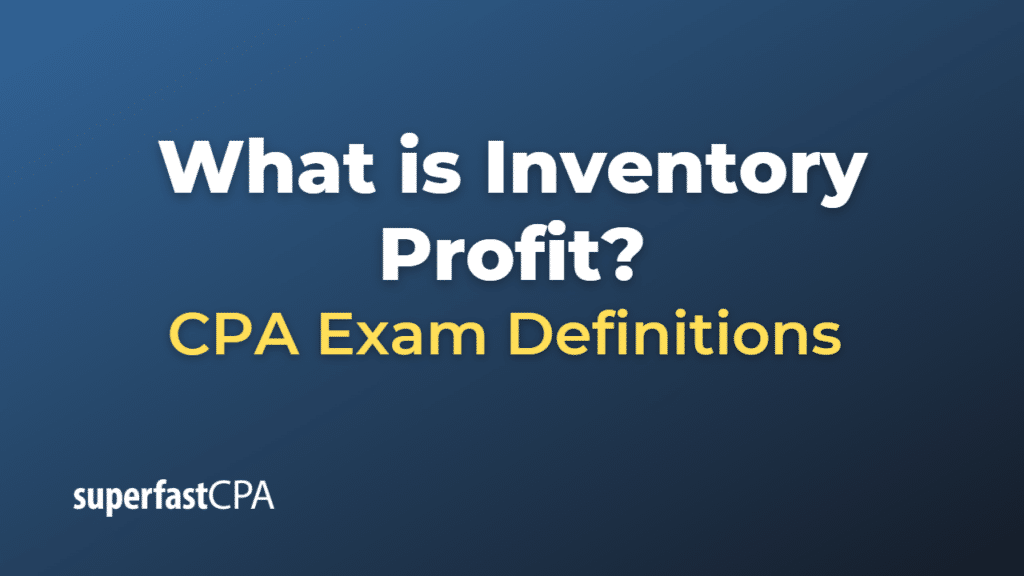Inventory Profit
Inventory profit, also known as inventory valuation profit or paper profit, refers to an increase in the value of inventory held by a company due to a rise in the market price of the inventory items over the price the company paid for them. This situation can arise when there are inflationary pressures in the economy, causing the prices of goods to increase over time.
Inventory profit is a “paper” or “unrealized” profit because it’s based on the increase in value of the inventory items on paper, but it doesn’t represent actual cash that the company has earned. It’s only when the company sells the inventory that it can realize the profit in cash. Also, it’s important to note that just as inventory can increase in value, it can also decrease in value due to factors such as obsolescence or changes in market demand, which could result in a loss.
In terms of financial accounting, companies using the FIFO (First In, First Out) or LIFO (Last In, First Out) inventory cost flow assumptions may experience different impacts from inventory profits. Under FIFO, during periods of rising prices, the cost of goods sold is based on the cost of older inventory, which can result in higher reported profits due to lower cost of goods sold. Under LIFO, the cost of goods sold is based on the cost of newer inventory, which can result in lower reported profits during periods of rising prices due to higher cost of goods sold.
However, it’s important to understand that these are accounting profits and not actual cash earnings. Until the inventory is sold, these profits are unrealized and susceptible to changes in market prices.
Example of Inventory Profit
Let’s consider a company that sells bicycles. They bought 100 bicycles for $100 each at the beginning of the year, for a total cost of $10,000.
By the end of the year, due to increased demand for bicycles and inflationary pressures, the market price for these bicycles has increased to $150 each. However, the company still has 50 bicycles in its inventory.
On paper, the value of this inventory has now increased from the initial cost of $5,000 (50 bicycles x $100) to $7,500 (50 bicycles x $150), which represents an inventory profit of $2,500.
However, it’s important to note that this is a paper profit. The company hasn’t actually made any additional money from this increase in value yet. It will only realize this profit if it sells the bicycles at the new higher price.
Also, there’s a risk that if the market price for bicycles falls again before the company sells its inventory, this paper profit could turn into a paper loss. So, while the increase in the value of inventory can look good on the company’s balance sheet, it doesn’t necessarily represent actual earnings for the company.













